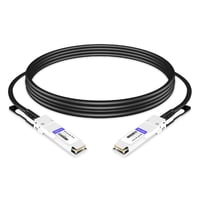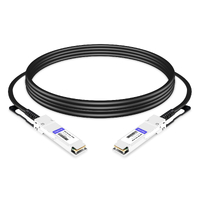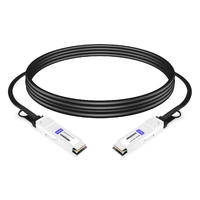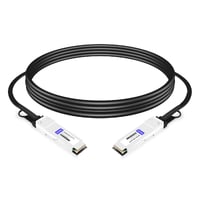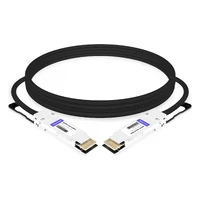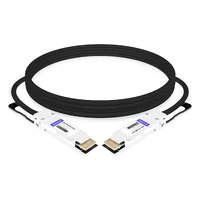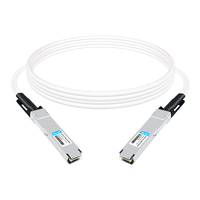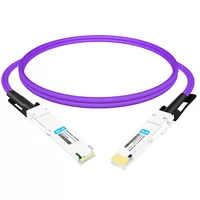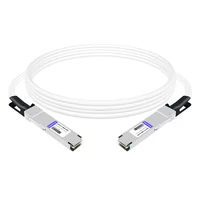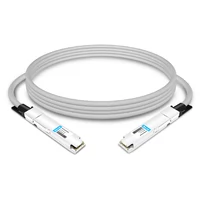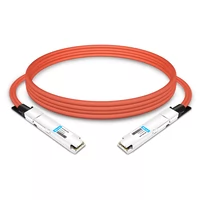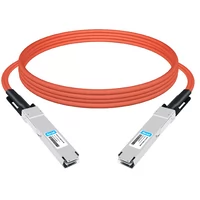To meet the demand for faster data transmission in today’s rapidly changing technology environment, it is more important than ever to be quick. Twinax cables using Direct Attach Copper (DAC) have become very necessary as they are part and parcel of these efforts and serve as the main channel in data centers and corporate networks. The purpose of this manual is to provide an all-around understanding of Twinax cables made with Direct Attached copper, which includes basic principles behind them, different uses they can be put into, major benefits that come along with their adoption, as well as some tips on how best to implement them. Whether one is a network engineer or IT manager, even if someone just loves gadgets – this text will give you everything needed so that one can make rational decisions about where such things should be installed or used within his network infrastructure.
Table of Contents
ToggleWhat is a Direct Attach Copper Cable?
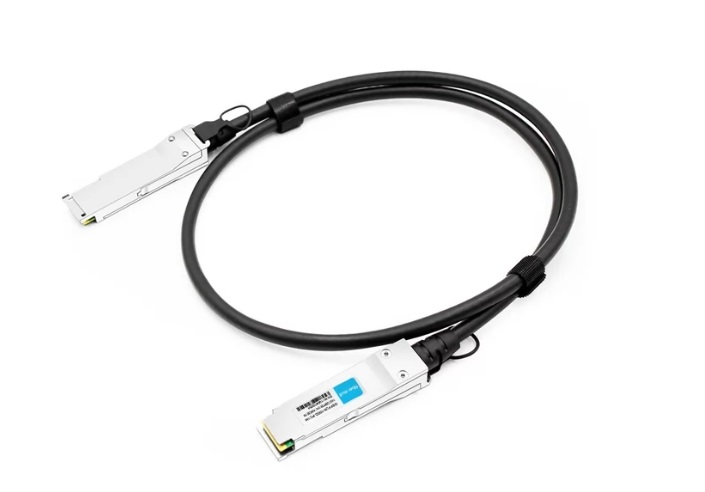
Understanding DAC Cable Concepts
A Direct Attach Copper (DAC) cable is a twinax copper cable of high speeds used to transmit data over short distances. These cables have transceivers with fixed connections on either end, which allows them to be directly connected with networking equipment like switches, routers, servers, etc. With low latency operation, DAC cables are actually cheaper than fiber optic cables for distance ranges of 7 meters and below. In fact, they find wide application in connecting between racks in data centers as well as across neighboring racks, where they deliver better signal integrity because of less signal noise interference, among other benefits like reliability and efficiency when it comes to performance enhancement.
Types of Direct Attach Copper Cables
There are usually two primary kinds of Direct Attach Copper (DAC) cables: Passive DAC Cables and Active DAC Cables.
Passive DAC Cables: These wires lack any active electronic devices; they depend solely on physical features of the cable as well as transceiver for data transmission. They come in handy when the distance covered is relatively short, around 5 meters, since their simplicity and affordability make them attractive options.
Active DAC Cables: These cables have active electronic components that help boost signal quality as well as extend their range. Active DACs work best for longer distances – typically up to 7 meters long – because they can counteract the weakening of signals over increased lengths. In comparison to passive ones, although costing more money, these perform better where connecting over larger distances with higher data integrity is necessary.
Applications of Copper Twinax
Direct Attach Copper (DAC) cables that are made of copper and referred to as Copper Twinax cables a well-known name in high-speed networking resources. They have multiple uses, such as:
- Data Centers: In data centers, they can be used to connect servers within racks together or even across adjacent racks with storage units or switches. This is because they possess low latency and are cost-effective, thus suitable for short-range connections needed by high-performance computing environments.
- Enterprise Networks: Enterprise networks employ these wires when connecting routers among other devices like network interface cards (NICs). They are popularly known for their reliable nature during performances plus ease of deployment which makes them best suited for creating strong network infrastructures demanding high data throughput rates.
- Telecommunication Systems: Copper twinax cables are widely adopted in telecommunication systems due to the fact that most of the equipment used in this industry requires fast data transmission speeds between different parts. Additionally; signal integrity can be kept over short distances hence making it possible for many devices to be packed closely together within limited spaces occupied by telecommunications hardware.
These examples demonstrate how flexible and efficient copper twinax cables could be in today’s communication structures developed around networking.
How Do Direct Attach Copper Cables Compare to Optical Transceivers?
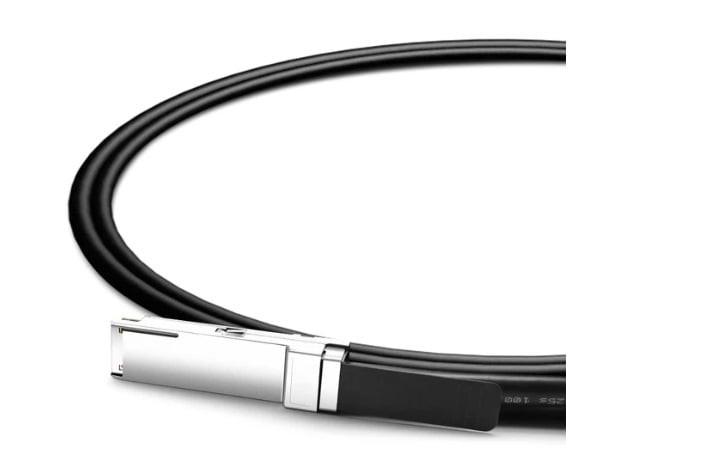
Differences between DAC and Optical Cables
Direct Attach Copper (DAC) cables and optical cables do similar jobs in a network infrastructure, but there is a big difference between them when it comes to their build, performance as well as areas of application.
- Build and Medium: The Twinax copper cabling used in the construction of DAC cables is more rigid by nature and less flexible compared to optical fibers. Unlike optic cables that use light for data transmission, they transmit electrical signals and hence can be made more flexible and durable.
- Range of Transmission: The most significant difference between these two types lies in their transmission distance capabilities. Generally, DACs are designed for short-range connectivity commonly up-to 10 meters which makes them perfect for data centers or server racks usage. Contrarily, optical fiber-based systems excel at covering long spans without much signal loss thus can cover kilometers when transmitting data.
- Bandwidth and Data Rate: Typically, optical cables offer larger bandwidths as well as higher data rates than DACs. This feature alone makes them ideal for high-speed networks that need to move huge volumes of information across vast distances.
- Latency: In terms of latency or delay time reduction due to its media type; optic cable always has an upper hand over DAC because light travels faster than electricity which is used by copper wires contained inside dac assemblies themselves.. Low latency is very important especially where we have applications expecting delivery speeds without any millisecond wasted.
- Cost: In general, DAC cords are cheaper both in terms of initial purchase price and overall deployment cost vis-à-vis optic fibers. No transceivers are required when making direct connections with them hence this further cuts down on costs associated with buying additional hardware components such as switches or routers that support fiber optic connectivity.
- Power Consumption: Optical transceivers typically consume more power than what would be expected from passive dac assembly modules alone. This becomes crucial mainly during large-scale installations where energy-saving measures should be put into consideration so as not only to save money but also to conserve the environment through reduced carbon footprints left behind after using electricity.
Overall, while being an affordable low latency option for short distances, DAC cables are not able to achieve high speeds of data transfer over long spans which can only be done by optical fibers because they have greater bandwidths, lower latencies and longer reaches.
Advantages of Using Direct Attach Copper
For data networks, Direct Attach Copper (DAC) cables have a number of important benefits:
- Economical: The DAC cables are much cheaper than the optical fiber cables. This can be attributed to the fact that they do not require costly transceivers, which might significantly reduce overall implementation costs.
- Power Efficiency: They consume much less power when compared with active optical cables. Hence they are energy-saving, especially in large-scale data centers where power consumption is a matter of concern.
- Shortest Delay: Latency is reduced because copper is used as a transmission medium. This attribute becomes very essential in applications like high performance computing and high frequency trading where real time data transfer with minimum delay is required.
- Simple Installation: DAC cables are easy to install and manage; usually pre-terminated, hence plug-and-play thereby reducing complexity as well labour needed for network configuration setup and maintenance.
- Limited Range Applicability: These types of wires are designed specifically for short distances thus ensuring reliable performance within up to 7 meters typically. Therefore this makes them most suitable for interconnecting devices within the same rack or between adjacent racks.
In summary, DACs provide an economic edge over other solutions by being less expensive and more power efficient while still offering lower latency at shorter connections within data centres therefore making it a good choice for specific network configurations.
Cost Considerations: Copper vs Fiber Optic
When it comes to copper and fiber optic cabling, there are many factors to consider regarding the cost dynamics.
- Initial Costs: Copper cables, especially the direct attach type (DAC), are usually cheaper in terms of upfront expenses as compared to their fibre optic counterparts. The reason behind this is that copper materials are relatively inexpensive and they do not require costly transceivers.
- Installation Expenses: Labour required during installation process for copper cable is minimal since it does not need special tools or highly skilled personnel reducing costs associated with installing them. Conversely, fiber optics installations can be very expensive due to their need for accuracy and special equipment.
- Maintenance And Repair: Overtime, copper wires are susceptible to signal degradation and damage thereby attracting higher maintenance and repair charges. However durable over long distances though fragile when faults occur making repairs expensive because of complicated fixing procedures involved with fiber optic cables.
- Operational Costs: Fiber optic cables have less attenuation, better performance over longer distances and can carry more data at higher speeds with less interference. Although initial investments may be high but this leads to lower operational costs in terms of energy efficiency as well as reduced latency for transmitting data.
In a nutshell, copper presents itself as an effective solution for short-term or local area network needs while fiber offers significant advantages over time especially where large amounts bandwidths must be transmitted across longer paths. These two options should therefore be evaluated against specific requirements and financial implications of the given network infrastructure.
What Are the Different Types of DAC Cables?
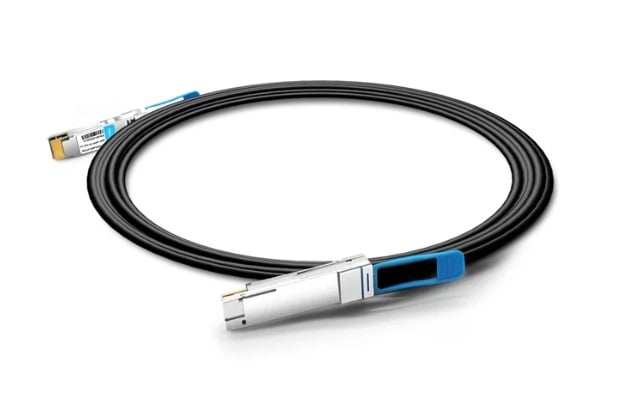
Active vs. Passive DAC Cables
DAC or Direct Attach Copper cables are important in high-speed networking environments. These types of cables can be either active or passive.
Active DAC Cables
Active DAC cables have extra electronic elements that increase signal quality over long distances by actively amplifying the signal so that it can maintain high performance within approximately 10 meters. These are better where you need a longer cable without compromising on integrity of the signals being transmitted; for example, they are commonly used in data centers and enterprise-level networks where there is demand for fast speeds combined with high fidelity.
Passive DAC Cables
On the other hand, passive DAC cables do not feature any additional components to help boost signals. In this case, data is transmitted through physical copper medium only which makes them cheaper and easier to make compared to their active counterparts. Nevertheless, due to degradation of signals along longer lengths these types are usually limited to shorter distances which could be around 7 meters at most. Passive DACs work well when connecting servers within a rack or between adjacent racks situated near each other.
In conclusion, it depends with what the network needs; active or passive DACs? Active ones should be used if you want better performance over extended ranges while passive ones offer cost effective solutions for short reach connectivity requirements.
Understanding Breakout DAC Cables
Fanout cords or breakout DAC cables split a single connection with high bandwidth into several separations. Commonly applied in dense-networking environments, they help connect one QSFP+ port to multiple smaller ports such as SFP+. The greatest benefit of breakout DAC cables is that they can combine network infrastructures, utilizing the available ports more effectively and reducing cable mess. These cords are very important where there is a need for speed data transmission as well as versatile connections, especially in enterprise networking setups and data centers, among others. In other words, these things make sure there’s reliable communication that is fast enough; therefore, they’re simple for complex network topologies, too.
Twinax vs Copper Twinax Cables
Copper Twinax cables are often referred to as Twinax cables interchangeably, but there are some differences between them. Twinax is a name for a high-speed data transmission cable with two inner conductors in one outer shield. The only difference here is that copper twinax cables have copper conductors, while other types of materials can be used with the same structure.
- Structure: There are two insulated copper conductors twisted together in both types of cables – twinax and copper twin-axial cables; they also include a shielding layer around them that protects against electromagnetic interference (EMI). This design ensures strong signal integrity over short to medium distances.
- Performance: Copper twinax cables have been known for their wide bandwidths coupled with low latencies which make them ideal for applications such as interconnecting data centers or high performance computing environments (HPCs). If made from copper, twins can deliver matching performance but may also be made from other materials.
- Applications: The two cable types find common use in situations where high speed communication over short ranges is necessary like connecting servers, storage arrays and switches among others; however, these features combined with ease of installation account for their popularity within most data centres.
In conclusion, it should be noted that the terms ‘twinax’ and ‘copper twinax’ cables may be used synonymously although the latter specifically refers to the use of copper conductors. For their reliability and performance both are essential within modern high speed networking environments.
How to Choose the Right Direct Attach Copper Cable?
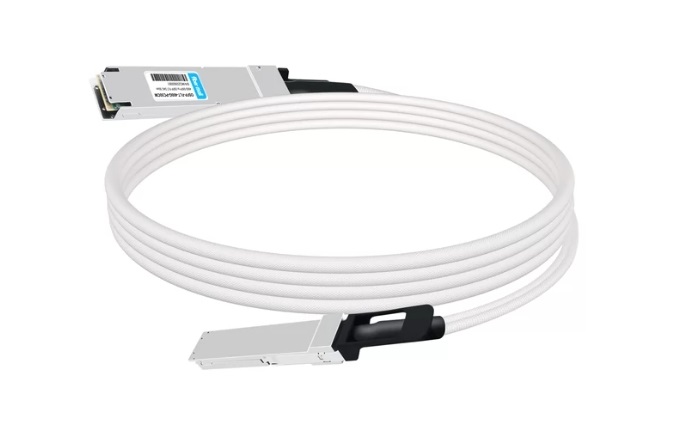
Factors to Consider: Speed and Distance
To guarantee the most excellent performance, it is necessary to assess both swiftness and range of direct attach copper cables (DAC). The speed rating should correspond with the required data transfer rate in a network. Some common alternatives are 10Gbps, 25Gbps, 40Gbps, or even 100Gbps which have various applications. More rapid wires are used for intensive care units and data centers that process large amounts of information.
The other important point to note is distance. DACs can work efficiently within short and medium distances, usually not exceeding seven meters, but this may change depending on the quality or specific use case of a wire. If extended beyond recommended lengths, signal degradation occurs, leading to higher latencies, hence affecting overall performance levels. Therefore, one should match cable lengths with operational distances needed so that not only integrity but also reliability of signals can be maintained.
In conclusion, aligning these two factors- speed ratings vis-a-vis data rates required by your network plus ensuring appropriate lengths based on connection needs will enable you to get the right ones among many available choices, thus saving time as well as preventing loss of data due to poor connections during the selection process. This will facilitate fast connectivity while minimizing signal delay or loss.
Cable Length and Bandwidth Requirements
When it comes to Direct Attach Copper (DAC) cables, there are many technical specifications that must be taken into account so as to establish the appropriate cable length and bandwidth. The first thing is that shorter DAC cables are usually preferred due to their low signal loss and decreased latency which are important for maintaining high-performance in fast networking systems.
Secondly, for higher bandwidth applications like 40Gbps or 100Gbps, it is always advisable to use shorter cable lengths. This helps in preventing problems such as signal attenuation and electromagnetic interference (EMI) that can affect data transmission negatively.
The other thing is that the type of cable chosen should match the required bandwidths of an application. Cables used on higher bandwidth applications should have better materials and construction so as not to degrade signals while supporting high data rates.
In summary always go for a short distance connectivity solution which satisfies your operational requirements but also ensures compatibility between its capacity levels and those demanded by your specific application hence enhancing network performance.
Compatibility with Equipment Ports
When assessing compatibility between devices and Direct Attach Copper (DAC) cables it is important to confirm that the cable as well as the equipment connected to it adhere to the same standards and protocols. Start off by checking if your networking hardware supports SFP+, QSFP or QSFP28 types of ports – this should be matched with respective cables.
Secondly, verify software versions, including firmware updates for both ends (network device side & cable side). Manufacturers often release specific firmware updates in order for them to work with different brands of DAC cables. Finally, take into account electrical specifications like voltage levels, not forgetting about environmental conditions such as operating temperature ranges, which must fall within those supported by the networking equipment used. To ensure seamless interaction and reliable network performance, always use validated/certified DAC cables recommended by the equipment manufacturer.
What Are the Installation Best Practices for DAC Cables?
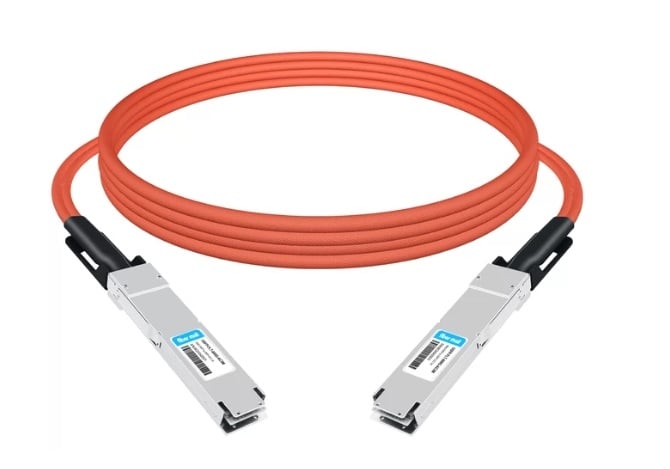
Proper Handling of DAC Cables
To maintain the performance and durability of Direct Attach Copper (DAC) cables, it is important to handle them correctly. First, do not bend the cables beyond their minimum bending radius as this can damage the internal wires. Usually, the manufacturer indicates this in the product documentation. Maintaining signal integrity and extending cable life is achieved by keeping within the recommended limits of bend radius.
Secondly, do not pull or subject DAC cables to excessive physical stress when installing them. Use proper methods for strain relief, like cable management clips or ties to hold cables in place and prevent overstraining connectors. This will reduce incidences of cables getting damaged or network equipment ports spoiling.
Lastly, if necessary shield DAC cables against Electromagnetic Interference (EMI) by installing them away from sources that generate EMI and shielding where needed. For example, positioning near power lines or other high voltage sources should be avoided so as not to degrade signals. These guidelines guarantee dependable network performance while increasing DACs’ life expectancy.
Avoiding Common Installation Mistakes
For the optimal performance and longevity of DAC cables, it is important to avoid common installation mistakes. One mistake is not checking whether the DAC cables are compatible with the networking equipment. Always confirm that they match the manufacturers’ specifications. Moreover, improper cable routing may cause unnecessary tension and signal disturbance. Plan for lesser curve radius and distance from electromagnetic interference (EMI) sources when designing the cable pathways. Another mistake is failing to secure connectors properly; loose or poorly connected cables may lead to intermittent network troubles or even complete disconnection. Firmly seating connectors and using strain relief methods can prevent such issues. These are some of the best practices which, if followed, will help in preserving network infrastructure integrity and performance.
Ensuring Reliable Connections
Combining proper care, the right installation method and regular checking are the ways of ensuring solid connections with directly attached copper cables. Primarily, always hold the DAC cables with caution; do not fold them too much, and employ appropriate cable management systems to keep cable routes neat and relaxed. Secondly, check that connectors are properly fixed and tightened so as to avoid random links that may make the network unstable. Inspect cables frequently for any signs of tear or wear on both sides, including connectors, then take out any faulty part immediately.
Additionally, it is important to keep in mind where they are being used. Do not put DACs near Electromagnetic Interference (EMI) sources such as power lines or industrial machines because this could weaken signals. Properly shielding against EMI can greatly enhance connection standards as well as its dependability. Finally, always go by what equipment manufacturers recommend regarding usage and performance requirements for compatibility reasons only which may lead to better results in terms of speed etc.Test network performance from time to time so that you can be able identify potential problems before they occur thus keeping strong reliable network infrastructure intact.It is through these principles that one can achieve maximum reliability in their direct attach copper connectivity systems.
Frequently Asked Questions (FAQs)
Q: What are Direct Attach Cables?
A: Which is a direct attach cable? That refers to the Ethernet cable assembly, which is primarily utilized for short-distance network connections. It comprises of two shielded twinax copper wires with connectors at both ends.
Q: What is a DAC Twinax Cable?
A: DAC Twinax cable is a type of direct attach cable made from twin axles copper used in data centers to enable high-speed data transmission.
Q: What is the difference between Active and Passive Direct Attach Cables?
A: Active direct attach cables are designed with electronics for signal amplification over long distances while passive ones lack these devices hence they are much simpler and suitable only for short distances.
Q: When should you use a Passive Copper Direct Attach Cable?
A: It is best to use passive copper direct attach cable when making connections that are less than 7 meters apart, such as between ports within a rack or between racks in adjacent rows.
Q: What is the difference between Copper and Fiber Direct Attach Cables?
A: The main distinction between copper and fiber optic cables lies on their usage based bandwidth capacity where former employs twin axles of copper wire for shorter distances while latter utilizes optical fibers capable of supporting higher data rates over longer spans.
Q: How does QSFP Direct Attach Connections differ from SFP Direct Attach Connections?
A: QSFP uses four channels, each running at 10Gbps, totaling 40Gbps, so it is commonly used for 40G Ethernet connection, while SFP operates on a single channel rated at 10Gbps; hence, applicable on 10 Gigabit Ethernet links, but both can be either active or passive.
Q: What types of Twinax Cables are used to connect data center equipment?
A:Twinax cables that connect high-speed networking devices in such environments include passive direct attach copper (DAC) twin axles and active ones depending on distance requirement or performance needed during transmission through them.
Q: What are the typical applications of a Breakout Cable?
A: A breakout cable is an assembly used to divide one signal into multiple channels. For example, a 40G Ethernet port can be split into four 10G ethernet ports with the appropriate breakout cable.
Q: Why is a DAC Cable preferred over standard Ethernet cables in certain scenarios?
A: Data centers require shorter latency and power consumption so twin axles copper offers these features due to its low resistance which may not found when using other types like fiber optics or CAT6; moreover, this type has integrated connectors that make installations easier than any other kind including patch cords because they do not need separate plugs for each end point.
Q: Can I use a Direct Attach Copper Patch Passive Cable for long-distance connections?
A: No, you cannot use direct attach copper patch passive cables to cover long distances since they lack signal boosters, but instead should utilize either active DACs or fibers.
Related Products:
-
 QSFP28-100G-PC1M 1m (3ft) 100G QSFP28 to QSFP28 Copper Direct Attach Cable
$25.00
QSFP28-100G-PC1M 1m (3ft) 100G QSFP28 to QSFP28 Copper Direct Attach Cable
$25.00
-
 QSFP28-100G-PC3M 3m (10ft) 100G QSFP28 to QSFP28 Copper Direct Attach Cable
$43.00
QSFP28-100G-PC3M 3m (10ft) 100G QSFP28 to QSFP28 Copper Direct Attach Cable
$43.00
-
 QSFP56-200G-PC1M 1m (3ft) 200G QSFP56 to QSFP56 PAM4 Passive Direct Attach Copper Twinax Cable
$50.00
QSFP56-200G-PC1M 1m (3ft) 200G QSFP56 to QSFP56 PAM4 Passive Direct Attach Copper Twinax Cable
$50.00
-
 QSFP56-200G-PC3M 3m (10ft) 200G QSFP56 to QSFP56 PAM4 Passive Direct Attach Copper Twinax Cable
$80.00
QSFP56-200G-PC3M 3m (10ft) 200G QSFP56 to QSFP56 PAM4 Passive Direct Attach Copper Twinax Cable
$80.00
-
 QSFPDD-400G-PC50CM 0.5m (1.6ft) 400G QSFP-DD to QSFP-DD PAM4 Passive Direct Attach Copper Twinax Cable
$70.00
QSFPDD-400G-PC50CM 0.5m (1.6ft) 400G QSFP-DD to QSFP-DD PAM4 Passive Direct Attach Copper Twinax Cable
$70.00
-
 QSFP-DD-400G-AC3M 3m (10ft) 400G QSFP-DD to QSFP-DD PAM4 Active Direct Attach Copper Twinax Cable
$350.00
QSFP-DD-400G-AC3M 3m (10ft) 400G QSFP-DD to QSFP-DD PAM4 Active Direct Attach Copper Twinax Cable
$350.00
-
 OSFP-FLT-400G-PC50CM 0.5m (1.6ft) 400G NDR OSFP to OSFP PAM4 Passive Direct Attached Cable, Flat top on one end and Flat top on other
$110.00
OSFP-FLT-400G-PC50CM 0.5m (1.6ft) 400G NDR OSFP to OSFP PAM4 Passive Direct Attached Cable, Flat top on one end and Flat top on other
$110.00
-
 QDD-OSFP-FLT-AEC50CM 0.5m (1.6ft) 400G QSFP-DD to OSFP Flat Top PAM4 Active Electrical Copper Cable
$1200.00
QDD-OSFP-FLT-AEC50CM 0.5m (1.6ft) 400G QSFP-DD to OSFP Flat Top PAM4 Active Electrical Copper Cable
$1200.00
-
 OSFP-FLT-800G-PC2M 2m (7ft) 2x400G OSFP to 2x400G OSFP PAM4 InfiniBand NDR Passive Direct Attached Cable, Flat top on one end and Flat top on the other
$300.00
OSFP-FLT-800G-PC2M 2m (7ft) 2x400G OSFP to 2x400G OSFP PAM4 InfiniBand NDR Passive Direct Attached Cable, Flat top on one end and Flat top on the other
$300.00
-
 OSFP-800G-PC50CM 0.5m (1.6ft) 800G Twin-port 2x400G OSFP to 2x400G OSFP InfiniBand NDR Passive Direct Attach Copper Cable
$105.00
OSFP-800G-PC50CM 0.5m (1.6ft) 800G Twin-port 2x400G OSFP to 2x400G OSFP InfiniBand NDR Passive Direct Attach Copper Cable
$105.00
-
 OSFP-800G-AC3M 3m (10ft) 800G Twin-port 2x400G OSFP to 2x400G OSFP InfiniBand NDR Active Copper Cable
$600.00
OSFP-800G-AC3M 3m (10ft) 800G Twin-port 2x400G OSFP to 2x400G OSFP InfiniBand NDR Active Copper Cable
$600.00
-
 OSFP-FLT-800G-AC3M 3m (10ft) 800G Twin-port 2x400G OSFP to 2x400G OSFP InfiniBand NDR Active Copper Cable, Flat top on one end and Flat top on the other
$600.00
OSFP-FLT-800G-AC3M 3m (10ft) 800G Twin-port 2x400G OSFP to 2x400G OSFP InfiniBand NDR Active Copper Cable, Flat top on one end and Flat top on the other
$600.00

